
If you have been to Mexico before, please share your experiences, ideas and feedback (Hotel, Excursions, General Feeling,…) in the comments section below, by doing so you will help fellow travellers to plan their next trip

Mexico is an interesting destination for tourist and especially so for scuba divers. The country has a culture that in a blend of the original inhabitant and Spanish. That blend matured and later spread to what now is the Southwest of United States and as far off as the Philippines and other Spanish Asian colonies. Scuba divers have access to world class diving destinations. Warm water divers generally find the eastern coast as a more favored destination.
The Yucatán Peninsula often called the Mayan Rivera is one of the best diving destination in the world. Divers can dive along the coast and out to the Mesoamerican Reef in the Caribbean Sea or they can travel inland a short distance from the coast and dive the world renown Cenotes. The west coast called the Mexican Rivera also has its share of world class diving.
The western coast faces the Pacific Ocean and offers a wide range of diving experiences. The northern portion of the west coast includes the Baja Peninsula. The peninsula and the mainland coast contains the Gulf of California which is also called the Sea of Cortez. Here you will find outstanding dives for all skill levels. Advance divers and those with colder water experienced will have the chance to explore some of the best shark and whale diving in the world.
In this page you will find practical information to plan a scuba diving trip to Mexico:
Table of contents
Where to stay?
The west coast of Mexico offers outstanding Liveaboard opportunities. So the diver needs to decide if they wish to dive from a liveaboard or from a land based resort, or both. Divers going to Baja will be able to dive Guadalupe island or the Socorro Islands, both world class liveaboard destinations. If they decide to dive from a land based dive center they still have a number of destinations to choose from.
Divers going to the Mexican east coast do not have any liveaboards so they will be land based. Still there are many options that the divers can choose from. Indeed, the scuba diving and snorkeling sites near the Yucatan Peninsula are much alike the best dive sites of the Caribbeans.
Activities and excursions in Mexico
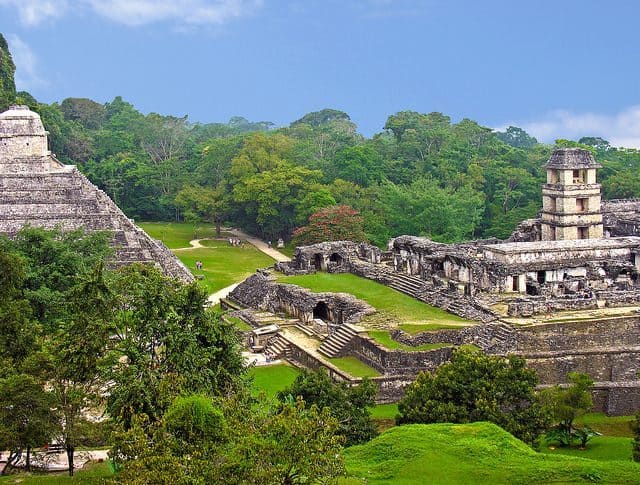
The Mayan site of Palenque – View from the Temple of the Cross, by Dennis Jarvis
Millions of people each year go to Mexico for vacations. Only a small percentage of that number are visiting in order to try scuba diving in Mexico. Those tourist and divers when they are not diving need things to do, and they can find lots of it in Mexico.
- Whale Watching: Both coasts, east and west, are great to watch whales. However, the Gulf of California has the migration of humpback whales. While not whales, whale sharks are also an attraction.
- Deep Sea fishing: Available on both coasts but more common around the Baja Peninsula
- Night life: The larger tourist centers such as Cabo San Lucas and Cancun are know for the nigh life.
- Mayan ruins: The Yucatán Peninsula was the home of the Mayan people and the ruins of some of their temples and cities still remain.
Best time to visit Mexico
Overall, Mexico is a great vacation destination year round. However, there are differences between the different tourist destinations for when is the best time to visit. Away from the coast line, higher elevations can create cooler temperatures and different rain conditions.
Although the weather in Mexico varies in the different regions, it remains comfortable for the tourists. May till August are the summer months and Mexico gets very hot and humid. See the destination tips for details.
Health and Safety
Portions of Mexico have high crime rates mostly associated with the drug trade or drug use. The situation around the tourist destinations are not overly impacted by these crimes. Still, there have been cases where cruise lines have avoided certain stops. General precautions should be exercised at all times. It is helpful to check official travel warnings by your government.
Overall, you will find that Mexico does have adequate medical care. In fact, there is a rising number of tourist who come to Mexico for medical tourism. These people come for medical procedures, mostly elective, that are of the same quality as their home country but only cost a fraction of the cost.
Check the local tips for medical information for certain areas.
If you are planning an upcoming dive trip or travelling to Mexico, it is a really good idea to invest in travel insurance for scuba diving, because you never know what could happen and when you might need it (because accidents do happen!). I recommend this diving insurance as they offer worldwide coverage and focus on providing scuba divers a quality insurance and medical assistance service.
Where is Mexico located in the world?
Mexico is located on the North American Continent whose northern border is with the United States. Belize and Guatemala are neighbors on Mexico’s southern border. The east coast of the country is on the Atlantic Ocean’s sub regions of the Caribbean Sea and the Gulf of Mexico. The tip of the Yucatán Peninsula is the dividing point between those two bodies of water. The Mexican coast along the Caribbean is sometimes called the Mayan Rivera.
The west coast of Mexico is on the Pacific Ocean side. The mainland of Mexico and the Baja California Peninsula are the coast lines that form the Sea of Cortez also known as the Gulf of California.
You can find more travel tips on the Yucatán Peninsula and Baja California Peninsula on their own travel tips page.
How to get to Mexico?
The majority of international visitors will fly into Mexico. The choice of airports will depend on where your final destination will be.
- Mexico City’s International Airport (airport code MEX) The largest airport in the country and one of the busiest in the region is Mexico City’s International Airport (AICM). A total of 30 airlines fly into the airport. Most of the airlines are international 24 with another 6 providing domestic connections only. These carriers allow you to connect to 52 domestic and 50 international destinations. There are international direct flights to Latin America, North America, Europe and Asia.
- Cancún International Airport (CUN): Cancún International Airport is the second busiest airport in Mexico. There are flights to a dozen Canadian cities and twice as many US cities. A few flights to Europe are also available. Cancún International Airport is one of four airports serving the peninsula. See the Yucatán Peninsula page for more details.
- Los Cabos International Airport (SJD): Los Cabos is your destination airport for the southern portion of the Baja Peninsula . Los Caos is the sixth-busiest airport in Mexico. The airport serves San José del Cabo, Cabo San Lucas, and the Los Cabos area. A number of other tourist destinations are within an hours drive of the airport.
- Tijuana International Airport (TIJ), sometimes referred to as General Abelardo L. Rodríguez International Airport, in Tijuana, Baja California, Mexico, serves the northern portion of the Baja Peninsula. Tijuana has easy ground transfers to the Pacific coast tourism destinations as well as some of the Gulf of Californian destinations. Many visitors, especially those from the United States will fly into San Diego Airport California which is only 45 minutes and has direct transfers to the Tijuana International Airport and Tijuana city.
Driving across the US/Mexican is also a means to arrive in Mexico. You should know that you must have Mexican insurance to enter the country by automobile and rental cars do not allow you to cross the border.
Do I need a visa for Mexico?
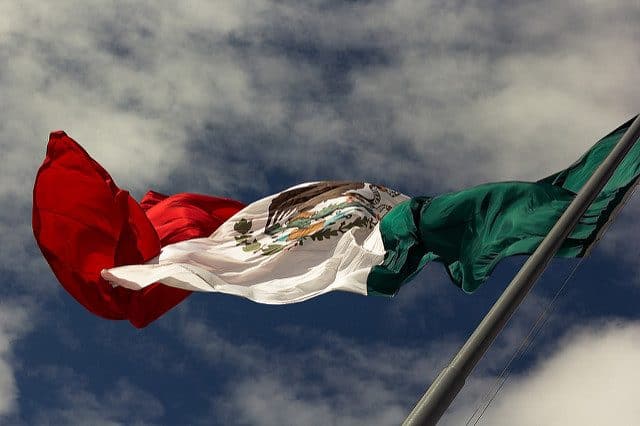
Welcome to Mexico photo by Livangm
Most travelers to Mexico will find they do not require a visa to enter the country for stays of up to 180 days. Even if you do not need a visa you will need an admission document. A Forma Migratoria Múltiple (FMM) is issued to to visitors at the border. The price will be determined by where you are traveling and for how long.
Generally there is no charge for land entries lasting less than a week. If you are staying longer you will need to pay $500 Pesos (appx U.S. $24). If you do need to pay for one, get one valid for 180 days.
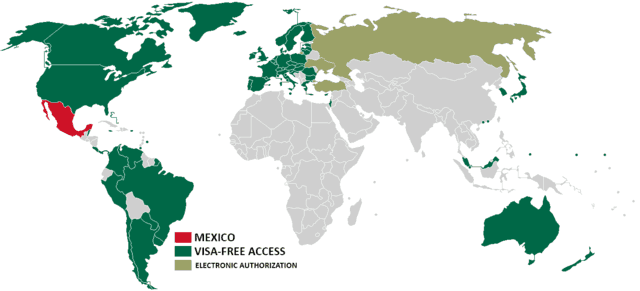
Visa Map
Nationals of 65 countries and jurisdictions shown on the map holding normal passports do not require a visa to enter Mexico as tourists, visitors in transit or business visitors. However, if you are traveling by way of the United states or Canada you must follow their visa requirements as well.
Getting Around
Once you arrive in country, getting around is fairly easy. The cities especially the areas that tourist go have a good public transportation system. Some of it may not be to the standards you would expect back home, so you might have to check out the quality before you travel. Taxi are readily available for local travel. Renting a car is also possible.
Between major destinations express bus services are available, however, it many cases these are very long trips. Air travel is generally the best means to travel longer distances. Mexico has a good network of international and domestic airports.
Mexico is an amazing destinations with two coast offering wholly different dive experiences. Choose which is best for you.
Mexico Photos
Scuba diving
You will find all information about sea life, best time to visit, top dive spots, etc. in our review: Mexico Diving

Diving Reviews for this region
Yucatán, Mexico
Mexico’s Yucatán offers outstanding reef diving, wall dives, drift dives and the largest underwater art museum in the world.
Mexico
Mexico offers divers choices, Great liveaboards and large marine life encounters in the west, great reefs and cenotes in the east
Baja California, Mexico
The Baja offers outstanding diving and is one of the best shark diving destinations for liveaboards.
 Destinations
Destinations

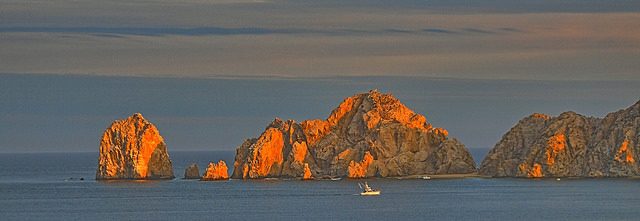


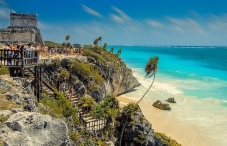

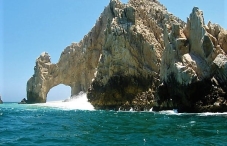





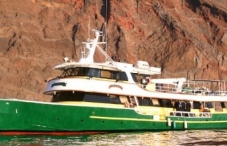


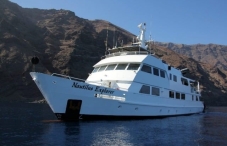

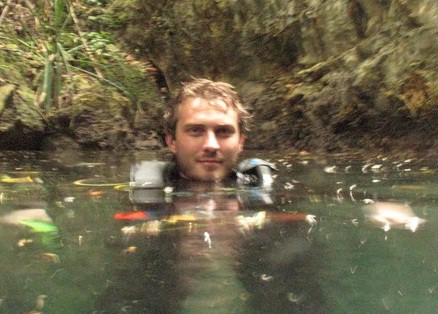




Your Travel Feedbacks
No Travel Feedback yet on this page, your thoughts are welcome!
Have you been travelling or scuba diving here? Rate it!(2 votes, 4.50/5)